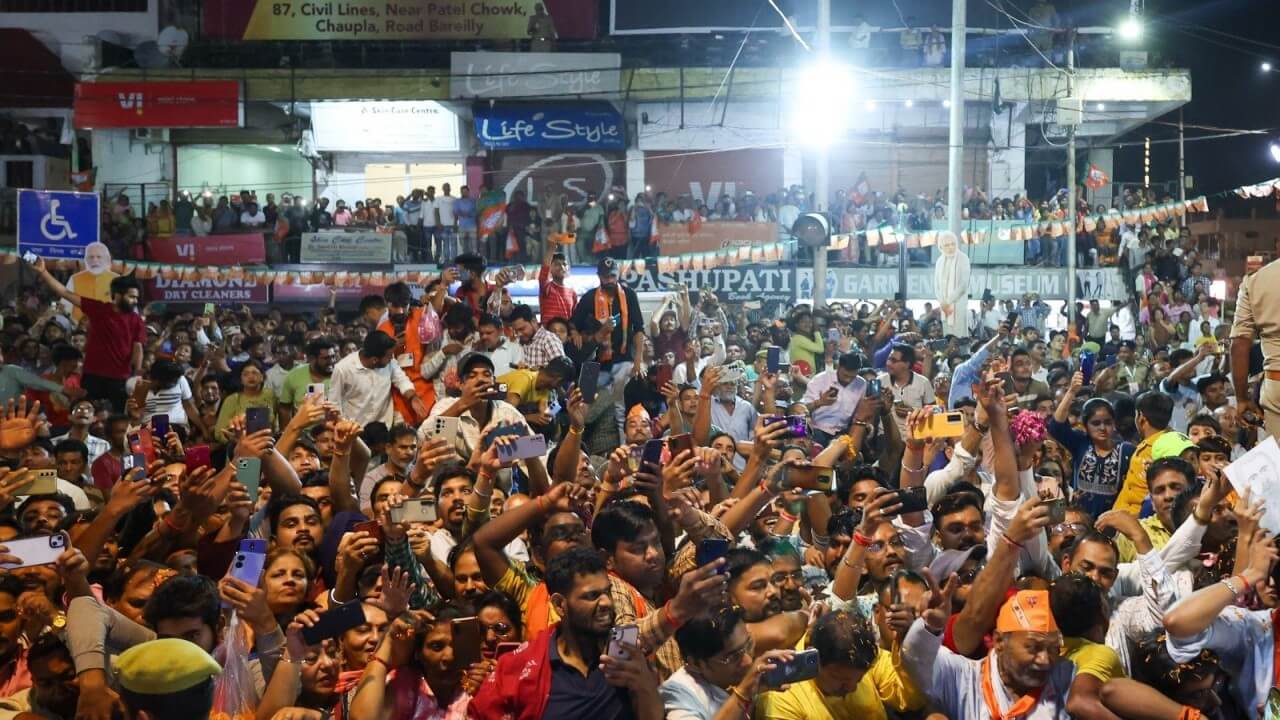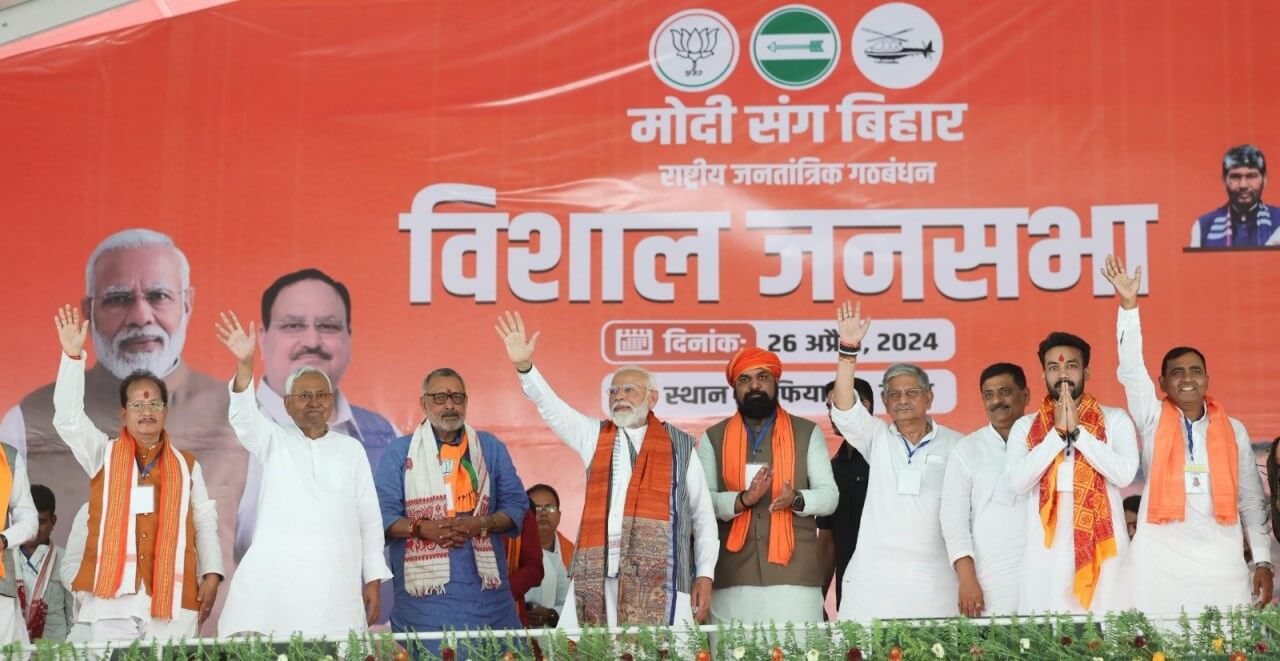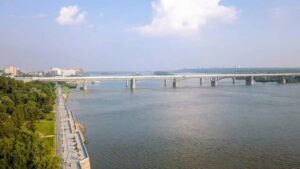
Buckingham Palace has announced that King Charles III will resume his public duties next week following treatment for cancer. His recovery is a significant development, and the Royal Family is closely monitoring his health.
King Charles III Resumes Public Duties After Cancer Treatment:
King Charles III is making a gradual return to his royal duties after receiving positive feedback from his medical team regarding his recovery from a recent cancer diagnosis.
Buckingham Palace disclosed that the 75-year-old monarch, accompanied by Queen Camilla, will visit a cancer treatment center in London next Tuesday.
Although details remain scarce, doctors are sufficiently pleased with the progress made so far, allowing the King to resume his public role. However, treatment continues, and it remains uncertain how long it will persist. His Majesty’s medical team remains optimistic about his continued recovery.
Recovery from cancer is a waiting game, even after treatment concludes. For most people, the risk of recurrence decreases with each passing day.
After five years, the likelihood of recurrence diminishes further, and some types of cancer may be considered cured after a decade. As spring transitions into summer, the King’s return to a more public role marks a positive step in his journey toward recovery.
Despite the challenges of the past few months, his residual fitness—fueled by years of robust health—may aid in boosting his well-being. The Queen once described him as “probably the fittest man of his age,” emphasizing his active lifestyle and endurance.
While anxiety persists, the King’s gradual return to public duties is a hopeful sign for the Royal Family and the nation. 🌟
What are the constitutional duties of King Charles III?
King Charles III, as the constitutional monarch of the United Kingdom, has several important duties and responsibilities. Let’s delve into them:
- State Opening of Parliament: The King formally opens each new session of Parliament, delivering the Queen’s Speech. This outlines the government’s legislative agenda for the upcoming session.
- Royal Assent: When Parliament passes a bill, it requires royal assent to become law. The King’s approval is a constitutional formality, and he signs bills into law.
- Diplomatic Functions: The King represents the UK in diplomatic relations with other countries. He receives foreign ambassadors and attends state banquets and official functions.
- Commander-in-Chief: As head of the armed forces, the King holds the highest military rank. However, operational control rests with elected officials.
- Constitutional Safeguard: The King acts as a constitutional safeguard, ensuring that the government operates within legal boundaries and adheres to democratic principles.
How has the public reacted to his illness?
Regarding public reactions to his illness, there has been a mix of concern, support, and curiosity. Many people have expressed sympathy and well-wishes for his recovery. The nation closely follows updates on his health, reflecting the deep respect and interest in the monarchy. Some segments of the public have speculated about the nature of his illness, but official statements have been limited. Overall, there’s a sense of hope that he will continue to fulfill his duties despite the health challenges.
Queen Camilla’s role during this time
Queen Camilla, as the King’s consort, plays a crucial role during this time:
- Support and Companionship: Queen Camilla provides emotional support to the King. Her presence and encouragement contribute to his well-being.
- Public Appearances: She represents the Royal Family at events when the King is unable to attend due to his treatment. Her active involvement maintains continuity.
- Advocacy: Queen Camilla may champion causes related to cancer awareness and research. Her involvement raises awareness and offers hope to others facing similar health battles.
- Stability: Amid uncertainty, Queen Camilla’s steady presence ensures stability within the Royal Family and reassures the public.
King Charles III’s constitutional duties persist, and Queen Camilla’s unwavering support contributes to the monarchy’s resilience during this challenging period. 🌟
King Charles III, formerly known as Charles, Prince of Wales, holds a significant place in British history due to his unique circumstances and the legacy associated with his name. Let’s explore the historical context and media coverage surrounding his reign, along with insights into other members of the Royal Family:
Historical Significance of King Charles III:
- Name Controversy: Upon Queen Elizabeth II’s passing, Charles ascended to the throne as King Charles III. His choice to retain the name “Charles” is intriguing because it invokes memories of two previous monarchs from the House of Stuart: Charles I and Charles II.
- Charles I: Charles I, who reigned during the 17th century, faced conflicts with parliaments in England and Scotland. He believed in the divine right of kings and resisted constitutional limitations. Ultimately, he was convicted of high treason and executed in 1649, marking a pivotal moment in British history.
- Charles II: Charles II, known as the “Merry Monarch,” returned from exile to restore the monarchy after the English Civil War. Although popular, he struggled as a statesman and military leader. His reign didn’t fully resolve religious divisions.
- By choosing the name “Charles III,” the current king acknowledges this complex historical backdrop and embraces the challenges of his role in a politically and constitutionally uncertain era.
Media Coverage of His Illness:
- Frustration and Recovery: King Charles III’s nephew, Peter Phillips, revealed that the monarch is “frustrated” by the pace of his recovery from cancer treatment. Despite this, he remains pragmatic and recognizes the need to focus on his well-being. The public has closely followed updates on his health, expressing sympathy and support.
- Speculation and Privacy: The revelation of Kate Middleton’s cancer diagnosis added to the tumultuous week for the British royal family. Kate’s video message clarified her health situation, leading to expressions of regret from those who had speculated about her condition. Both Kate and Prince William appreciated the outpouring of goodwill and requested privacy during this challenging time.
Other Members of the Royal Family:
- Prince William and Catherine, Princess of Wales: As the heir apparent, Prince William and his wife Catherine play essential roles. Their children—Prince George, Princess Charlotte, and Prince Louis—represent the next generation.
- Princess Anne: Anne, the Princess Royal, actively carries out royal duties.
- Prince Edward and Sophie, Duchess of Edinburgh: They contribute to official engagements.
- Prince Harry and Meghan, Duchess of Sussex: Although they stepped back from royal duties, their impact remains significant.
- Princess Beatrice and Princess Eugenie: Granddaughters of Queen Elizabeth II, they also engage in public service.
- Prince Andrew, Duke of York: Despite controversies, he remains part of the family.
- Other Royal Relatives: Prince Richard, Duke of Gloucester; Prince Edward, Duke of Kent; Prince Michael of Kent; and Princess Alexandra, The Honourable Lady Ogilvy, contribute to the royal fabric.
King Charles III’s reign carries historical weight, and the Royal Family continues to navigate both personal challenges and public responsibilities. 🌟
Significance of King Charles III’s Regnal Name:
Upon Queen Elizabeth II’s passing, the former Prince of Wales was proclaimed King Charles III. His choice to retain this name is historically significant.
- Charles I: The first King Charles, born in 1600, faced conflicts with parliaments in England and Scotland. His belief in the divine right of kings led to his refusal to create a constitutional monarchy. He was convicted of high treason and executed in 1649.
- Charles II: The second King Charles, known as the “Merry Monarch,” restored the monarchy after the English Civil War. Although popular, he struggled as a statesman and military leader.
Queen Elizabeth II’s Influence on British History:
Queen Elizabeth II reigned for an impressive 70 years, witnessing significant changes.
- End of the Empire: During her reign, the British Empire transformed into the Commonwealth of Nations. Colonies gained independence, and Britain’s global influence shifted.
- EU Membership: In the 1970s, Britain joined the European Communities (now the EU), altering its economic and political allegiances.
- Steady Presence: Queen Elizabeth II provided stability, identity, and cohesion for the nation. Her calm presence cushioned Britain from radical shocks and uncertainties.
Prince William and Kate Middleton:
- Prince William: As the elder son of Charles and Diana, Prince William is second in line to the throne. He has actively served in the military, championed mental health awareness, and taken on royal duties.
- Kate Middleton (Catherine, Princess of Wales): Kate, Duchess of Cambridge, married Prince William in 2011. She has become a beloved figure, known for her grace, style, and commitment to various causes.
- Their Relationship: Their relationship faced scrutiny but remained strong. Recently, Kate’s cancer diagnosis revealed their resilience and commitment to privacy. They have three children: Prince George, Princess Charlotte, and Prince Louis.
In summary, King Charles III’s name carries historical weight, Queen Elizabeth II’s legacy endures, and Prince William and Kate Middleton continue to navigate their roles within the Royal Family. 🌟
Role of Prince William in the Royal Family:
- Prince William, born on June 21, 1982, is the heir apparent to the British throne. He is the elder son of King Charles III and Diana, Princess of Wales.
- His education included Eton College and the University of St Andrews, where he earned a Master of Arts degree in geography. It was at St Andrews that he met his future wife, Catherine Middleton.
- William trained at the Royal Military Academy Sandhurst and served with the Blues and Royals. He also graduated from the Royal Air Force College Cranwell and joined the RAF Search and Rescue Force.
- As part of his official duties, William holds patronage with over 30 charitable and military organizations. His charity work focuses on mental health, conservation, homelessness, and emergency workers.
- In 2020, he launched the Earthshot Prize, a £50 million initiative to incentivize environmental solutions over the next decade.
- William became the Duke of Cambridge before his wedding in April 2011. Following his father’s accession to the throne in September 2022, he also became the Duke of Cornwall and Duke of Rothesay, and the next day, he was made Prince of Wales.
Impact of Kate Middleton on British Fashion and Culture:
- Kate Middleton, the Duchess of Cambridge, is an influential style icon. Her elegant and sophisticated outfits often feature British designers and high-street brands.
- The “Kate effect” refers to her economic influence, estimated to give a £1 billion annual boost to the UK fashion industry. Her fashion choices inspire millions of women worldwide.
- Notable moments include her engagement announcement in a blue wrap dress by Daniella Helayel, which sold out within hours, and her support for British designers like Issa.
- The Netflix series “The Crown” recreates some of Kate’s iconic early 2000s moments, including her runway strut at a university fashion show in 2002, where she caught Prince William’s eye.
Queen Elizabeth II’s Early Reign:
- Born on April 21, 1926, during the reign of her paternal grandfather, King George V, Elizabeth was the first child of the Duke and Duchess of York (later King George VI and Queen Elizabeth The Queen Mother).
- When her father died in February 1952, Elizabeth—then 25 years old—became queen of seven independent Commonwealth countries: the United Kingdom, Canada, Australia, New Zealand, South Africa, Pakistan, and Ceylon (now Sri Lanka).
- Her reign of over 70 years is the longest of any British monarch, the longest of any female monarch, and the second longest verified reign of any monarch in history.
- Throughout her reign, she navigated major political changes, including the Troubles in Northern Ireland, devolution in the UK, decolonization in Africa, and the UK’s accession to the European Communities.
- Elizabeth’s historic visits and meetings included state visits to China, Russia, and the Republic of Ireland. She served as a constitutional monarch, overseeing significant cultural and social changes.
Prince William plays a vital role in the Royal Family, Kate Middleton’s fashion choices have a significant impact, and Queen Elizabeth II’s early reign set the stage for her historic and enduring monarchy. 🌟
Prince Harry’s Visit and Prince William’s Role:
Prince Harry is flying in from the US to visit his father, demonstrating family support during this challenging time. Meanwhile, Prince William, who was already due to return to official duties after his wife’s operation, will likely play a more prominent role in public appearances and official duties.
Queen Camilla Takes Center Stage:
Queen Camilla, who wasn’t part of the Royal Family two decades ago, has continued her remarkable journey within the monarchy. She’s now a senior member of the working royals, stepping up during this period of health challenges.
The Royal Family faces uncertainties, but their resilience and unity remain steadfast. We wish King Charles III a swift recovery and strength to the entire family during this time. 🌟



























Wonderful website you have here but I was curious if you knew of any message boards that cover the same topics talked about in this article? I’d really love to be a part of group where I can get responses from other knowledgeable individuals that share the same interest. If you have any recommendations, please let me know. Kudos!
I love what you guys tend to be up too. Such clever work and coverage! Keep up the great works guys I’ve added you guys to blogroll.
Some really interesting details you have written.Assisted me a lot, just what I was looking for : D.